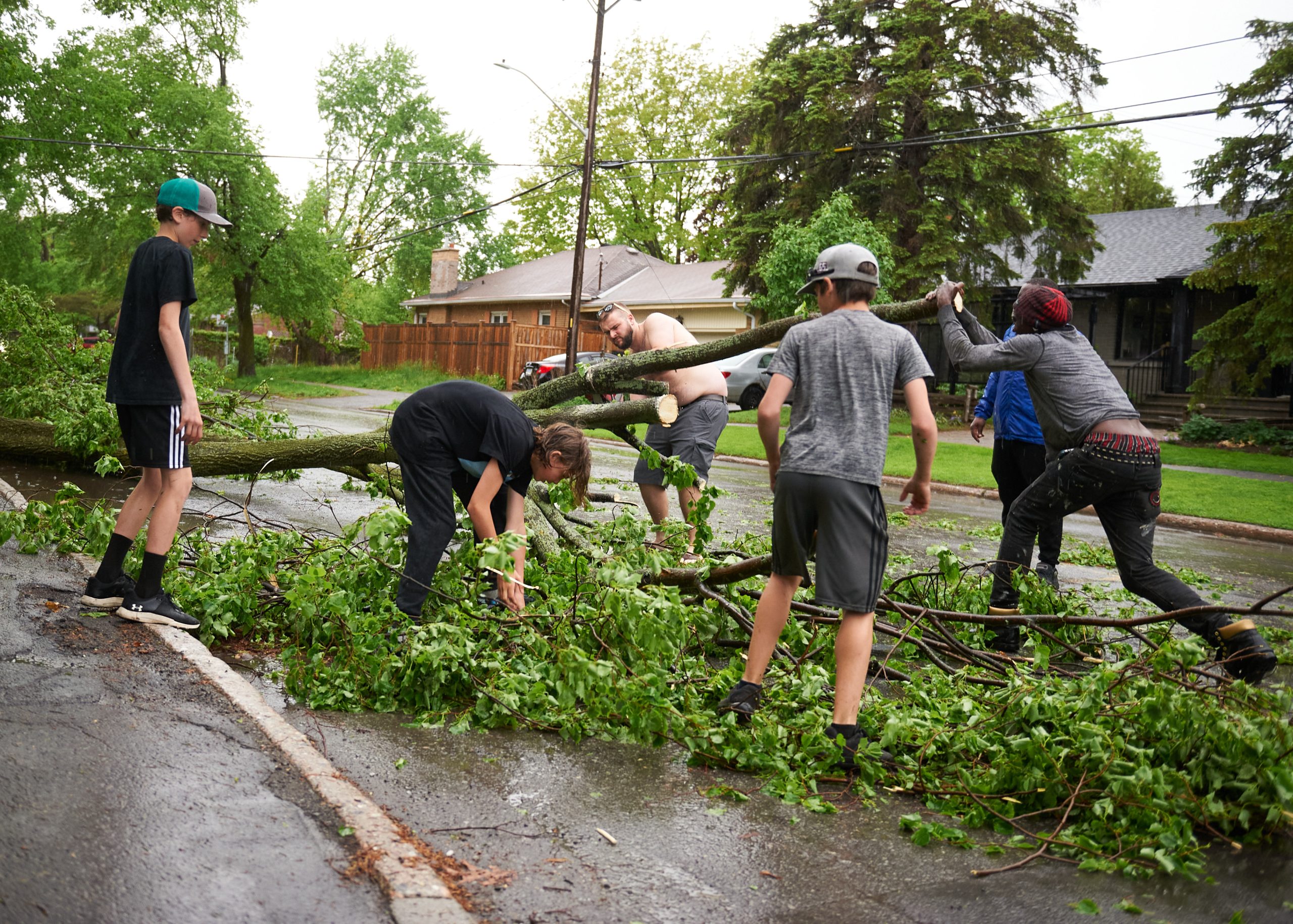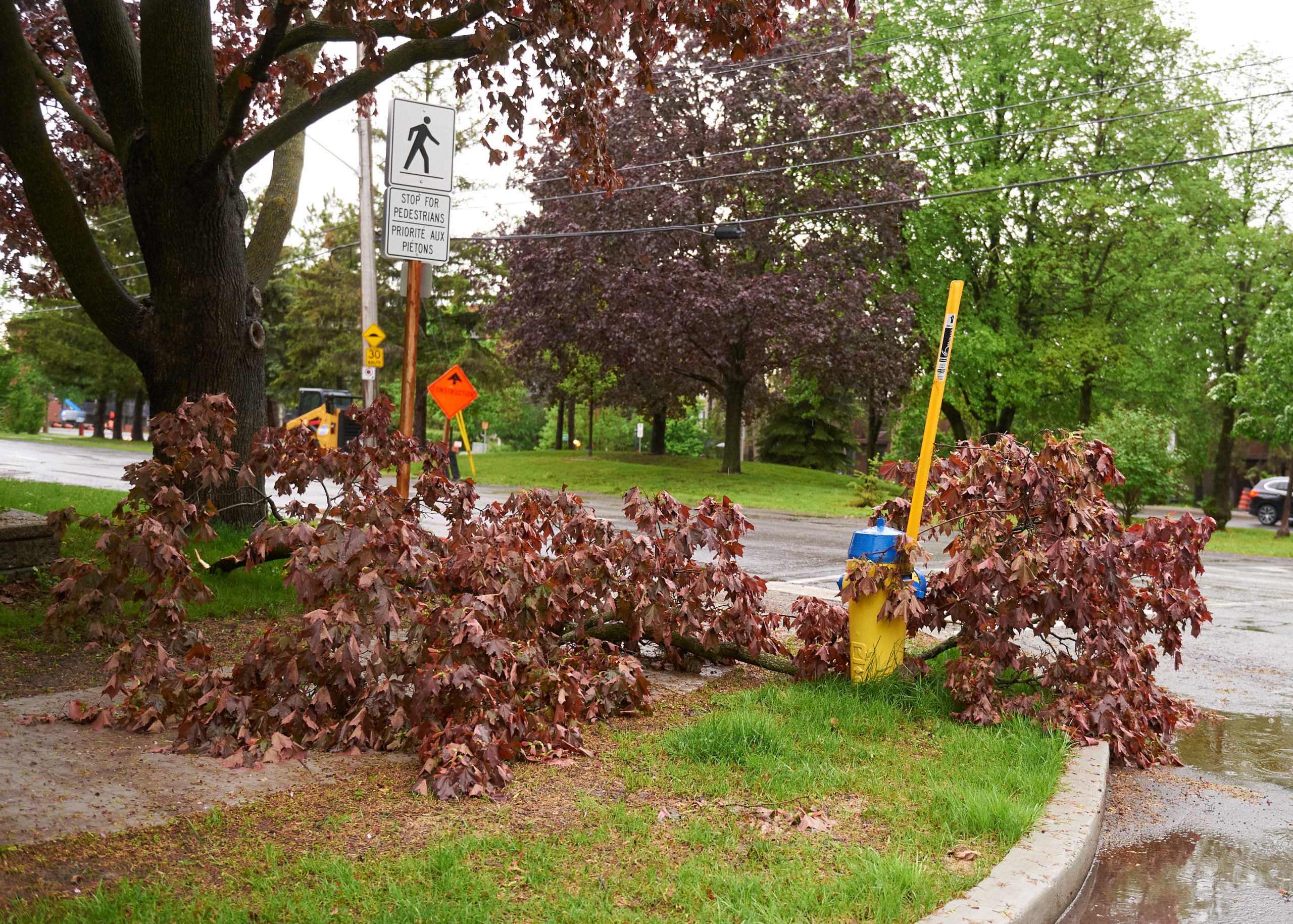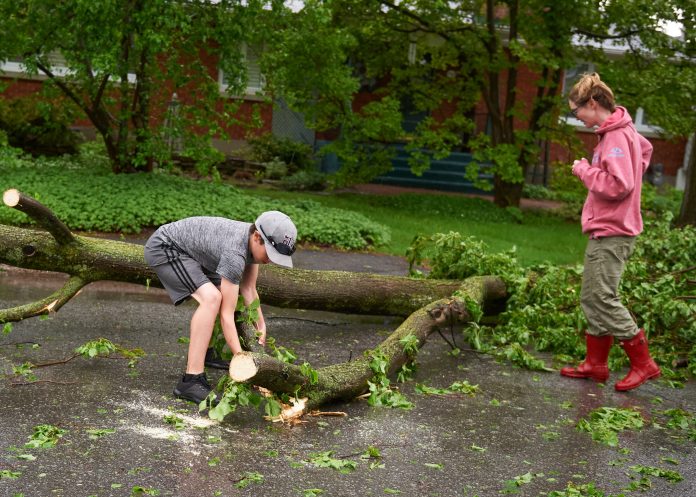By Maureen McEwan
It was an unfortunately memorable May long weekend in the National Capital Region.
A storm blew through Ottawa in the afternoon of May 21, leaving a wake of destruction: damage to personal and public property; widespread outages; blocked roads; delayed public transit; torn-down towers and live wires; and many uprooted trees.
Tragically, several people died as a result of the storm and its aftermath across Ontario and Quebec, including at least one person in Ottawa. On May 22, Ottawa Police confirmed that they were investigating the death of a 59-year-old man after a tree fell on him at a golf course in the city’s west end.

Initially, the storm left nearly 180,000 people without power, according to Hydro Ottawa. Days later, tens of thousands of people were still left without power.
“I’ve never seen such an unbelievable, powerful storm of this nature,” said Mayor Jim Watson on May 21.
Kim Ayotte, general manager of emergency and protective services for Ottawa, described the storm as a “major weather event causing significant damage” in the hours after the storm.
“We are used to weather events in this city, but every one of them is unique. This one hit us hard and hit us fast and it hit virtually the entire city—rural communities, suburbs and our urban centre,” Ayotte said May 21.
“The sheer area that was affected is like nothing we’ve seen, in my memory,” Ayotte added.

Ottawa has endured weather events like record-setting spring floods in 2017 and 2019 and tornadoes in 2018 that left 430,000 people without power in the Ottawa-Gatineau region, according to Environment Canada.
But in the days following the May long weekend’s storm, Hydro Ottawa confirmed that it was one of the worst weather events over the last few decades.
“This event is significantly worse than both the [ice storm] of 1998 and the tornadoes of 2018. The level of damage to the distribution system is due to high winds, fallen trees and significant damage to hydro poles,” Hydro Ottawa stated in a May 23 press release.
The City of Ottawa went into “activated operations for this incident,” according to its website, with crews from the Ottawa Police, Ottawa Fire Service, Ottawa Paramedic Service, forestry and other services responding to the event.
The city also opened several Emergency Reception Centres where residents could access power and amenities like washrooms and showers.

At the time of writing, tens of thousands of Ottawa residents were still without electricity in the days following the storm; the city and its partners were working to restore power and services.
